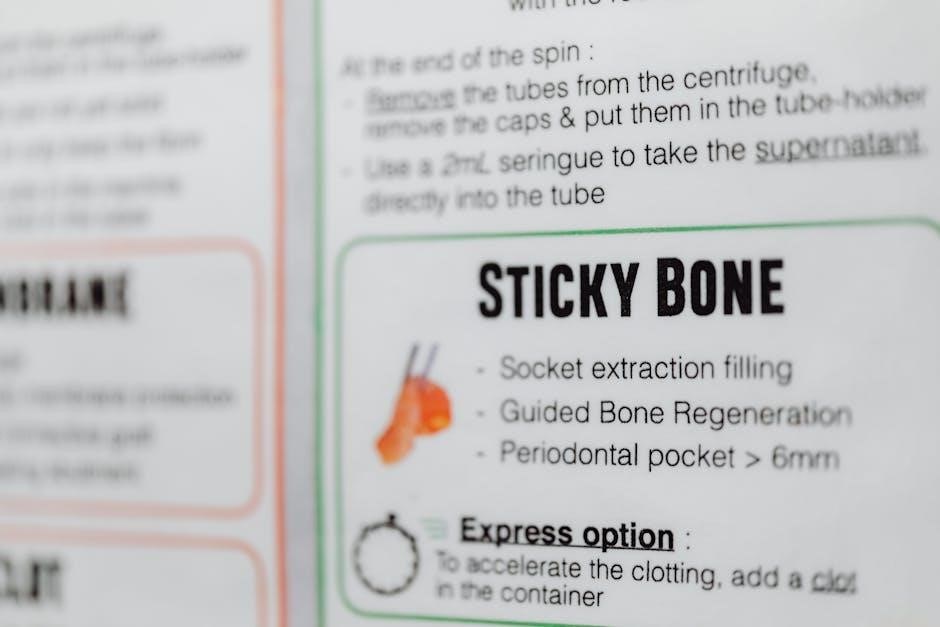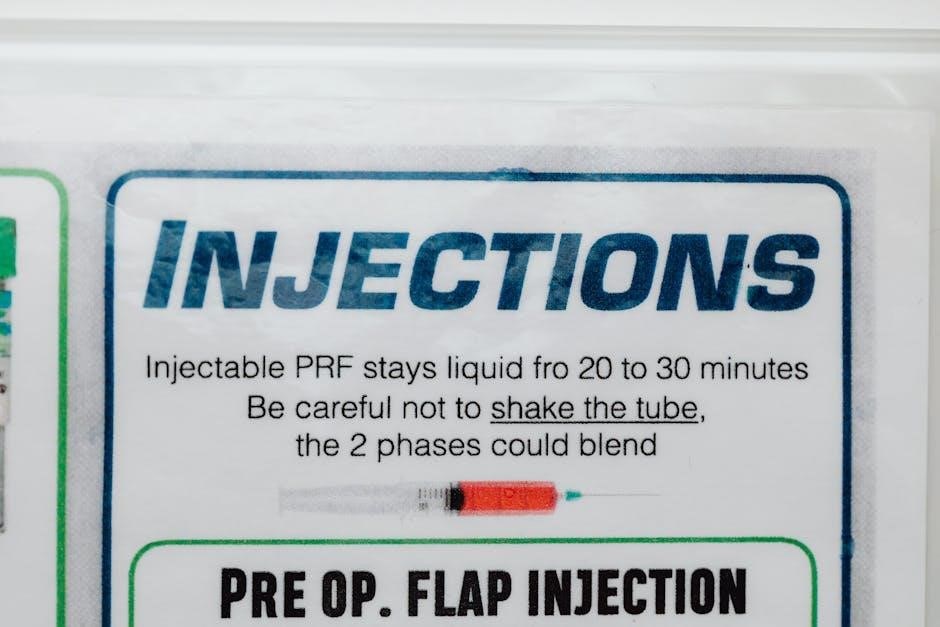
The Poly-Choke is a versatile‚ adjustable shotgun choke system designed for precision shooting. It allows shooters to customize their choke settings for various scenarios‚ enhancing accuracy and performance. Easy to install and adjust‚ it is a popular choice for hunters and sport shooters seeking reliability and consistency. Proper installation and maintenance ensure optimal functionality‚ making it a valuable addition to any firearm.
Understanding the Basics of Poly-Choke

The Poly-Choke is a adjustable shotgun choke system designed to provide shooters with versatility in various shooting scenarios. It allows for seamless customization of choke settings‚ ranging from cylinder to full‚ depending on the desired shot pattern. Unlike fixed chokes‚ the Poly-Choke enables quick adjustments without the need for tools or additional tubes. Its design typically involves a rear piece that attaches to the barrel and a front piece that can be rotated to select the desired choke setting. This mechanism ensures consistency and accuracy‚ making it ideal for both hunting and competitive shooting. The system is known for its durability and ease of use‚ offering a practical solution for shooters seeking precision and flexibility in the field or on the range. Proper understanding of its operation is key to maximizing its performance.
Importance of Proper Installation and Adjustment
Proper installation and adjustment of the Poly-Choke are critical for optimal performance and safety. Incorrect installation can lead to improper functioning‚ potentially causing damage to the firearm or inconsistent shot patterns. Ensuring the Poly-Choke is securely fitted to the barrel and aligned correctly prevents wear and tear on both the choke and the shotgun. Adjustment is equally vital‚ as it directly impacts the shotgun’s accuracy and effectiveness in different shooting scenarios. Misalignment or improper tightening can result in reduced performance or even safety hazards. Following the manufacturer’s instructions carefully is essential to avoid these issues. Regular checks and adjustments are recommended to maintain the Poly-Choke’s effectiveness and longevity. Proper installation and adjustment not only enhance shooting performance but also ensure the durability of the system‚ making it a reliable tool for hunters and sport shooters alike. Attention to detail is key to maximizing the benefits of this versatile choke system.

Installation Steps for Poly-Choke
Tighten the Poly-Choke by hand‚ ensuring it is securely fitted to the barrel. Align the notch with the desired setting‚ then tighten the front sight firmly. Proper installation ensures optimal performance and safety.
Choosing the Right Tools and Materials

Installing a Poly-Choke requires specific tools to ensure a secure and precise fit. A choke wrench or barrel vise is essential for tightening the choke mechanism. Additionally‚ a cleaning brush and solvent are necessary to prepare the barrel. For more complex installations‚ a lathe may be needed to ensure the barrel’s muzzle is concentric. Proper lubrication is crucial to prevent corrosion and ensure smooth adjustment. Always use high-quality‚ firearm-specific lubricants. It’s also advisable to have a set of screwdrivers and Allen keys for any additional adjustments. The correct Poly-Choke tube for your firearm is vital‚ as compatibility varies by make and model. Ensure all tools are clean and in good condition to avoid damaging the barrel or choke. Proper preparation and the right materials guarantee a safe and effective installation. A well-equipped workspace and a thorough understanding of the process are key to success.
Preparing the Barrel for Poly-Choke Installation
Before installing a Poly-Choke‚ ensure the barrel is clean and free of debris. Use a high-quality cleaning brush and solvent to remove any residue or fouling. Inspect the barrel for nicks‚ burrs‚ or uneven surfaces‚ as these can affect the choke’s performance. If necessary‚ lightly polish the muzzle end with a fine-grit sandpaper to ensure a smooth‚ even surface. For threaded barrels‚ verify that the threads are undamaged and free of old adhesive or debris. If the barrel was previously fitted with a different choke system‚ ensure all remnants are removed. A lathe may be used to precision-cut the muzzle for optimal concentricity‚ though this is optional depending on the Poly-Choke model. Finally‚ apply a thin layer of firearm-specific lubricant to the barrel’s muzzle to facilitate smooth installation and adjustment of the Poly-Choke. Proper preparation ensures a secure fit and optimal performance.
Step-by-Step Installation Guide
Begin by ensuring the barrel is clean and properly prepared. Screw the Poly-Choke onto the barrel by hand until it stops. Tighten it fully using a wrench‚ then back off one full turn to avoid over-tightening. Align the desired choke setting by rotating the Poly-Choke until the notch aligns with the preferred marking on the barrel. Secure the choke by tightening the front sight or adjustment ring firmly. For threaded models‚ ensure the threads are clean and apply a small amount of lubricant before screwing the Poly-Choke into place. Tighten clockwise until snug‚ then back off slightly to set the desired choke. Use a wrench for final tightening‚ ensuring the Poly-Choke is snug but not over-tightened. Once installed‚ test the choke by cycling through the settings to ensure smooth operation and proper alignment.

Adjusting the Poly-Choke Settings
Rotate the Poly-Choke to align the desired setting with the notch. For threaded models‚ tighten until snug‚ then back off slightly. Ensure the choke is secure to prevent shifting during use.
Selecting the Right Choke Setting for Different Shooting Scenarios

Selecting the appropriate Poly-Choke setting is crucial for optimal performance in various shooting situations. For close-range targets‚ such as skeet or quail‚ an open choke like Improved Cylinder or Modified is ideal‚ allowing a wider shot pattern. At medium distances‚ like duck hunting or clay pigeons‚ a tighter setting such as Full or Extra Full provides better accuracy. For long-range targets‚ including turkey hunting‚ the tightest settings like X-Full or XX-Full are recommended to maintain a dense shot pattern. In home defense scenarios‚ an open choke ensures a rapid spread at close quarters. The Poly-Choke’s versatility allows shooters to adapt to any situation‚ ensuring consistent and effective results. Proper selection enhances accuracy‚ control‚ and overall shooting performance‚ making it a valuable tool for both hunters and sport shooters.
How to Adjust the Choke Mechanism
Adjusting the Poly-Choke mechanism is straightforward and requires minimal tools. Begin by tightening the choke all the way to the full position. Once tight‚ back off one full turn to ensure proper alignment. Next‚ align the desired choke setting with the notch on the choke tube. For precise adjustments‚ rotate the outer sleeve until the chosen setting aligns with the indicator mark. Tighten the sleeve firmly to secure the setting. Always refer to the markings on the choke tube for accurate adjustments. If unsure‚ consult the included instructions or manufacturer guidelines. Proper adjustment ensures consistent performance and prevents damage to the mechanism. Regular checks and minor adjustments before use are recommended to maintain optimal functionality.
Maintenance and Troubleshooting

Regular cleaning with a barrel cleaner and lubrication with gun oil keeps the Poly-Choke functioning smoothly. Inspect for wear and debris. Address stuck chokes by cleaning or replacing parts as needed.

Cleaning and Lubricating the Poly-Choke
Cleaning and lubricating the Poly-Choke are essential for maintaining its performance. Start by using a high-quality barrel cleaner to remove residue and debris from the interior and exterior surfaces. A soft-bristle brush can help scrub away stubborn grime. After cleaning‚ apply a thin layer of gun oil to all moving parts to ensure smooth adjustment and prevent rust. Avoid using harsh chemicals or abrasive materials that could damage the finish or mechanisms. Regular lubrication is particularly important if the Poly-Choke is exposed to moisture or heavy use. For best results‚ clean and lubricate the Poly-Choke after every use or at least once a month if stored. This routine maintenance will extend the lifespan of the Poly-Choke and ensure it functions reliably in various shooting conditions.
Common Issues and How to Fix Them
One common issue with the Poly-Choke is that it may become too tight or difficult to adjust. This can often be resolved by cleaning and lubricating the mechanism thoroughly. If the choke is loose‚ check for wear on the threads or the adjusting mechanism and replace any damaged parts. Rust or corrosion can also hinder performance‚ so regular maintenance is crucial. Another issue is improper alignment of the choke settings‚ which can lead to inconsistent shooting patterns. To fix this‚ ensure the Poly-Choke is properly seated and aligned with the barrel before use. If the choke does not hold its setting‚ inspect the locking mechanism for debris or damage. In some cases‚ tightening the front sight or adjusting the mechanism according to the manufacturer’s instructions may resolve the issue. Addressing these problems promptly ensures optimal performance and longevity of the Poly-Choke.

When to Replace Parts
Replace Poly-Choke parts when you notice visible wear‚ such as stripped threads or excessive corrosion. If the choke no longer holds its setting or adjustments become difficult‚ it may be time for replacement. Damaged or worn-out components can lead to inconsistent performance and potential safety hazards. If cleaning and lubrication do not improve functionality‚ consider replacing the affected parts. Additionally‚ if the choke mechanism shows signs of rust or pitting‚ replacing it is advisable to maintain accuracy and reliability. Always use genuine replacement parts to ensure compatibility and performance; Regular inspections can help identify issues early‚ preventing more severe damage. Replace the Poly-Choke entirely if major components are damaged beyond repair‚ ensuring your firearm functions safely and effectively.